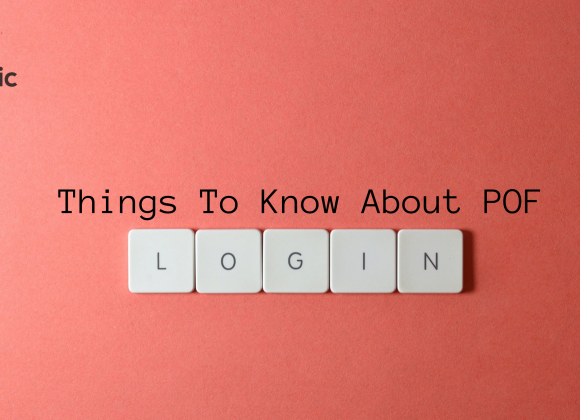Introduction
The event registration process is a critical component in event planning. It shapes the initial experience of future attendees and sets the tone for the event itself. Online event registration tools have revolutionized this process, providing a convenient platform for potential attendees to sign up for events. Effective event registration software can streamline registration, making it easier for attendees and event organizers. It helps manage ticket sales, enables group registration, and ensures a smooth, hassle-free experience right from filling out the registration form to the end of the event. This guide will delve deeper into the intricacies of the event registration process, shedding light on utilizing Webex events and various event registration systems to their fullest potential.
How To Start The Event Registration Process
Get Clear On Event Basics
1. Virtual Or In-Person?
Deciding whether your event will be virtual or in-person is a fundamental first step in the event registration process. This decision significantly influences how you approach event planning and registration. With today’s advanced event registration software, planning for both types of events can be streamlined.
For in-person events, the event registration process involves managing ticket sales, attendee check-ins, and group registration. The event registration software efficiently organizes these elements, providing a smooth experience for event organizers and attendees alike.
Virtual events, on the other hand, require a slightly different approach. The event registration software must integrate seamlessly with Webex events or other online platforms. When potential attendees fill out an online event registration form, the software should send them all the necessary information about how to log into the virtual event.
2. Know Your Goals
Determining your event’s objectives is another crucial aspect of the event registration process. Whether you aim to raise funds, enhance brand awareness, or promote networking, your goals will influence your event’s format, content, and target audience. Establishing clear goals will also help you choose the right event registration software. Specific platforms may suit your needs better than others, depending on whether your event is more educational, corporate, or social. For instance, you might need software that easily integrates with a fundraising tool if your objective is to raise money for a cause. On the other hand, if your event is designed for networking, your chosen platform should facilitate the easy exchange of contact information among attendees. Understanding your goals allows you to tailor the event registration process to meet your needs better.
3. Figure Out Ticket Tiers
Establishing ticket tiers is another integral part of the event registration process. This involves determining the number of ticket types or levels you will offer and their corresponding prices. For example, you may provide general admission, VIP, or early bird tickets. Event registration software can manage this complex task, offering flexible pricing and discount options that attract a diverse audience.
Ticket tiers not only help to maximize revenue but also allow organizers to cater to different audience preferences. For instance, a VIP ticket could offer premium seating, exclusive merchandise, or meet-and-greet opportunities, catering to attendees willing to pay more for a superior experience. Early bird tickets, on the other hand, incentivize swift action, rewarding those who register early with discounted prices.
Selecting the right event registration software can simplify this aspect of the process. Look for a system that offers flexible ticketing options, easy customization, and efficient handling of discounts or promotional codes. Successful ticket tier management can lead to an improved attendee experience and a more profitable event.
Find The Right Event Registration Software
1. Figure Out Your Budget
Determining your budget is a pivotal step in your event registration process. It plays a significant role in the choice of your event registration software. Many options exist in the market today, ranging from free platforms to more expensive, feature-rich event management systems. Your budget will guide you in selecting the ideal choice that provides the required utility without straining your resources. While deciding on your budget, consider the size of your event, the number of attendees, and the complexity of your needs. Free or less expensive platforms could be suitable for small-sized or straightforward events. However, more significant circumstances with intricate conditions may necessitate more comprehensive, albeit pricier, software. Investing in a compelling event registration system can enhance the attendee experience, streamline your processes, and contribute to a successful event. Therefore, balancing cost and utility is essential, ensuring you get the best return on your investment.
2. Do Your Research
In the event registration process, researching the available event registration software options is paramount. Begin by listing your needs and goals, which will guide your software selection process. For instance, if your event relies heavily on networking, opt for a software with great networking and attendee engagement features. If you’re planning a large-scale event, look for software that can handle complex processes and a large number of registrations. Then, compare the features, pricing, and reviews of different software options. Take advantage of free trials, if available, to test the functionality and ease of use of the software. Moreover, consider the software’s integration capabilities; it should ideally sync effortlessly with your existing tools or software. Your aim should be to find a robust, user-friendly, and cost-effective solution that simplifies the event registration process and enhances the attendee experience.
3. Decide On Features And Services
Deciding on the features and services that your event registration software should have is a crucial step in your event registration process. Consider features that are fundamental to your event – for example, if your event includes multiple sessions or workshops, you may need software that allows for session-specific registration. Other desirable features could include automated email confirmation, ticket scanning capabilities, and real-time reporting. Some event registration platforms even offer marketing tools to help promote your event. Additionally, consider the level of customer service provided by the software company. Comprehensive technical support can be invaluable in ensuring a smooth registration process. By carefully considering your event’s specific needs and the features that will best support them, you can select an event registration software that streamlines your process, enhances the attendee experience, and contributes to a successful event.
9 Event Registration Strategies

1. Promote It On Social Media
Social media platforms are powerful tools in the event registration process. They offer a broad reach, enabling you to connect with potential attendees worldwide. By creating engaging posts about your event, you can raise awareness, spark interest, and encourage sign-ups. Platforms such as Facebook and LinkedIn allow you to create event pages where you can share all the necessary details and even facilitate the registration process. Twitter and Instagram, on the other hand, are excellent platforms for sharing quick updates, behind-the-scenes sneak peeks, and interactive content such as polls or Q&As. Remember, consistency is key – regular posts keep your event top of mind for your audience. Another effective strategy is leveraging the power of hashtags. They can increase the visibility of your event, especially if you create a unique, event-specific hashtag. Also, consider paid social media advertising for a more targeted approach. Finally, don’t forget to include a clear and direct call-to-action, such as “Register Now,” along with a link to your registration page.
2. Create An Eye Catching Landing Page/ Website
A visually appealing and user-friendly landing page or website can significantly boost your event registration process. This platform serves as the primary portal where potential attendees can fetch vital information about your event and, most importantly, where they can register. Ensure your website or landing page is navigable, informative, and reflective of your event’s theme. Include key details like the event date, location (or virtual platform), schedule, speakers, ticket pricing, and any other pertinent information. Remember, the registration button should be prominently displayed and easy to locate. Your chosen event registration software should ideally integrate seamlessly with your website, providing a smooth and quick registration process. An optimized landing page not only attracts more attendees but also provides an excellent first impression of your event, setting the stage for an engaging and successful event experience.
3. Leverage Your Speakers & Sponsors
Leveraging the influence and reach of your event’s speakers and sponsors can be an effective strategy in your event registration process. Your speakers, being industry experts or thought leaders, likely have a sizable following. Encourage them to promote the event on their social networks, which can attract a wider audience and stimulate registrations. Provide them with pre-made promotional materials, such as event banners or social media posts, to make sharing as easy as possible. Similarly, your sponsors can play a significant role in driving event registrations. As partners invested in the event’s success, they should be willing to advertise the event to their customer base. Consider including a clause in your sponsorship agreement that obligates sponsors to promote the event on their platforms. By leveraging your speakers and sponsors, you can extend your event’s reach and increase registration rates. Your chosen event registration software should ideally support these promotional efforts by providing easy access to registration links and promotional materials.
4. Embed Clear CTAs
Clear and compelling Calls to Action (CTAs) are crucial to driving registrations in any event registration process. They guide your potential attendees on what steps to take next, essentially serving as signposts leading to registration. When designing your CTAs, make sure they’re eye-catching and strategically placed on your promotional materials, website, and social media posts. The language used should be direct and action-oriented—phrases like “Register Now”, “Reserve Your Spot”, or “Join Us” work well. Moreover, ensure your CTAs are linked to your event registration software, directing clickers to an easy-to-navigate, user-friendly registration page. The right CTA can make the difference between a visitor and a registered attendee, so it’s essential to get it right.
5. Communicate Urgency
Communicating a sense of urgency is a proven method to increase the event registration rates. Limited-time offers and early bird discounts are extremely effective in driving quick sign-ups. Set a deadline for these offers and highlight them on your website, emails, and social media platforms. Further, you could also limit the number of seats available, adding a “seats remaining” counter to your registration page that decreases as people sign up. This creates a sense of scarcity, further propelling the audience to take immediate action. Remember, the key is to make these limitations visible and real to your potential attendees. Your chosen event registration software should be able to facilitate these features easily, making the process smooth for both you and your attendees. Remember, urgency should be genuine and not come off as a sales gimmick to avoid damaging your event’s reputation.
6. Use Analytics
Utilizing analytics is pivotal in optimizing your event registration process. By tracking and analyzing data, you can gain deep insights into your audience’s behavior and preferences, allowing you to tailor your strategies accordingly. For example, you could determine which marketing channels are driving the most registrations, and then focus your promotional efforts there. Additionally, analytics can shed light on what’s deterring registrations, whether it’s a clumsy sign-up process or a poorly designed website. By identifying these pain points, you can make necessary improvements to enhance the attendee experience and boost sign-ups. Event registration software often comes with built-in analytics tools, providing you with easy access to critical data. Remember, data-driven decision-making is key to maximizing registrations and, ultimately, the success of your event.
7. Offer Early Bird Discounts & Coupons
Offering early bird discounts and coupons is an effective strategy in the event registration process. This method incentivizes potential attendees to register early by providing them with a discounted rate. These discounts not only spark interest but also instill a sense of urgency, encouraging swift action. It’s a win-win situation—you secure a base number of attendees well ahead of time, and your attendees appreciate the cost savings. When setting up your early bird discounts, consider factors like the size of the discount, the duration of the offer, and the total number of early bird tickets available. Striking the right balance is key to ensure that this strategy is profitable for your event. Coupons, on the other hand, can be used to attract specific segments of your audience, like students or returning attendees. Or, provide them to sponsors and speakers to distribute within their networks. Regardless of how you use them, be sure to track coupon usage to understand its impact on your registrations.
8. Run A Raffle Or Online Giveaway
Running a raffle or online giveaway can be an exciting and engaging way to boost your event registration process. This strategy involves offering a chance to win a prize or freebies to those who register for your event within a specified period. The allure of potentially winning a prize can motivate your audience to take quick action and register. You can up the ante by offering prizes that are highly desirable or closely related to your event, such as free VIP tickets, exclusive event merchandise, or an opportunity to meet with the keynote speaker. Announce the raffle or giveaway on your website, social media platforms, and email newsletters, highlighting the value of the prize and the easy entry process. Also, consider the rules of the raffle or giveaway, ensuring they are fair, clear, and comply with any relevant laws or regulations. Your chosen event registration software should facilitate the setup and tracking of this strategy, allowing you to monitor its effectiveness in driving registrations.
9. Add Event Description
Adding a comprehensive event description is paramount in the event registration process. It serves as the cornerstone of your event’s presentation, providing potential attendees with key details and persuasive reasons to register. Your event description should not only convey the ‘what,’ ‘where,’ and ‘when’ of your event, but also the ‘why’—the unique value proposition that sets your event apart. Showcase the highlights of your event, such as keynote speakers, exclusive content, networking opportunities, or unique experiences attendees won’t find elsewhere. Use compelling, exciting language that communicates the benefits and outcomes attendees can expect. Be sure to align your description with your target audience’s interests and expectations, crafting a narrative that resonates with them. Event descriptions can be distributed across various platforms, including your website, social media channels, email newsletters, and event registration software.
Conclusion
In conclusion, the event registration process is a critical aspect of event planning that demands strategic execution. Utilizing social media, creating engaging websites, leveraging speakers and sponsors, crafting clear CTAs, and communicating urgency are all powerful strategies to boost event registration. Additionally, the use of analytics, early bird discounts, running raffles, and providing an in-depth description can significantly enhance the registration process. All these efforts, when combined, create a seamless registration process that not only attracts more attendees but also provides an excellent first impression of your event. Event registration software, such as Orderific, can streamline these processes, providing a smooth and efficient experience. For more insights into how Orderific can enhance your event registration process, schedule a demo with us today. We’re here to support your event’s success from start to finish.
FAQs
What is the significance of a well-defined event registration process?
A well-defined registration process is essential as it ensures a seamless attendee experience, promotes efficient sign-ups.
How does the event registration process benefit both organizers and attendees?
The registration process benefits both organizers and attendees by ensuring smooth sign-ups, efficient management, and an enhanced overall experience.
Are there different types of event registration processes, and how do they vary?
Yes, there are different types, such as online, on-site, and invitation-only, each with unique benefits and best suited to different event types.
What information is typically collected during the event registration phase?
During the registration phase, information such as attendee’s name, contact details, and any special requirements or preferences are typically collected.
How can event organizers ensure a smooth and user-friendly registration experience for attendees?
Organizers can ensure a smooth and user-friendly registration experience by using intuitive software, offering multiple payment options, and real-time assistance.













